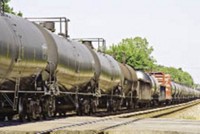Advertisement
Grab your lab coat. Let's get started
Welcome!
Welcome!
Create an account below to get 6 C&EN articles per month, receive newsletters and more - all free.
It seems this is your first time logging in online. Please enter the following information to continue.
As an ACS member you automatically get access to this site. All we need is few more details to create your reading experience.
Not you? Sign in with a different account.
Not you? Sign in with a different account.
ERROR 1
ERROR 1
ERROR 2
ERROR 2
ERROR 2
ERROR 2
ERROR 2
Password and Confirm password must match.
If you have an ACS member number, please enter it here so we can link this account to your membership. (optional)
ERROR 2
ACS values your privacy. By submitting your information, you are gaining access to C&EN and subscribing to our weekly newsletter. We use the information you provide to make your reading experience better, and we will never sell your data to third party members.
GLENN HESS'S excellent article about the Graniteville, S.C., disaster touched upon the implications for a potential terrorist use of poison-gas tank cars to kill thousands of target-city residents (C&EN, March 9, page 21). Not one poison-gas tank car has ever been designed to withstand terrorism, nor will the current much-touted effort make them so.
Even though railroads have only $1 billion in insurance for a disastrous $10 billion toxic gas release, they are still routing through and storing toxic gases in all 46 major U.S. target cities ("pre-positioning" as potential terrorist weapons) the 100,000-plus annual poison-gas rail cargoes that the federal government terms weapons of mass destruction. Chlorine Institute Pamphlet 74 says that one 90-ton tank car can produce a lethal toxic gas cloud 15 miles long and four miles wide. A chlorine production facility in Utah is recklessly shipping its product 2,000 miles to customers in Texas and Louisiana, where close-by chlorine facilities abound, as Union Pacific, which refuses to reroute, has piously pointed out in a petition to the Surface Transportation Board.
Some national experts, like Richard Falkenrath, now a top New York City counterterrorism official, see chemical security as the greatest single national vulnerability. Colorful railcar graffiti advertises the lack of rail security for dangerous cargoes.
U.S. railroads interchange cargoes with each other an estimated 6.5 million times each year but refuse to do so under worried cities' mandates for homeland security rerouting. As CSX Transportation concedes, since 9/11, the U.S. public has reconsidered what is an acceptable risk in urban freight railroading: "The support of the public, and of many policy makers, has greatly eroded since 9/11. Now the railroads are harshly criticized for transporting these [TIH, or 'toxic by inhalation' poison gas cargoes]. ... Our company's reputation has been assailed ... [and] vilified in the media. TIH [cargo] cannot simply continue to move by railroad indefinitely. ... Even if the potential for ruinous liability were somehow erased, the widespread social disapproval of TIH transport by rail would remain."
Chemical professionals should urge the Obama Administration and Congress to intervene immediately in the current secret railroad meetings in which individual railroads are unilaterally analyzing and selecting their urban hazmat routes. This sham process involves no significant input from state and local officials, as the National Conference of State Legislatures has protested.
Fred Millar
Arlington, Va.




Join the conversation
Contact the reporter
Submit a Letter to the Editor for publication
Engage with us on Twitter